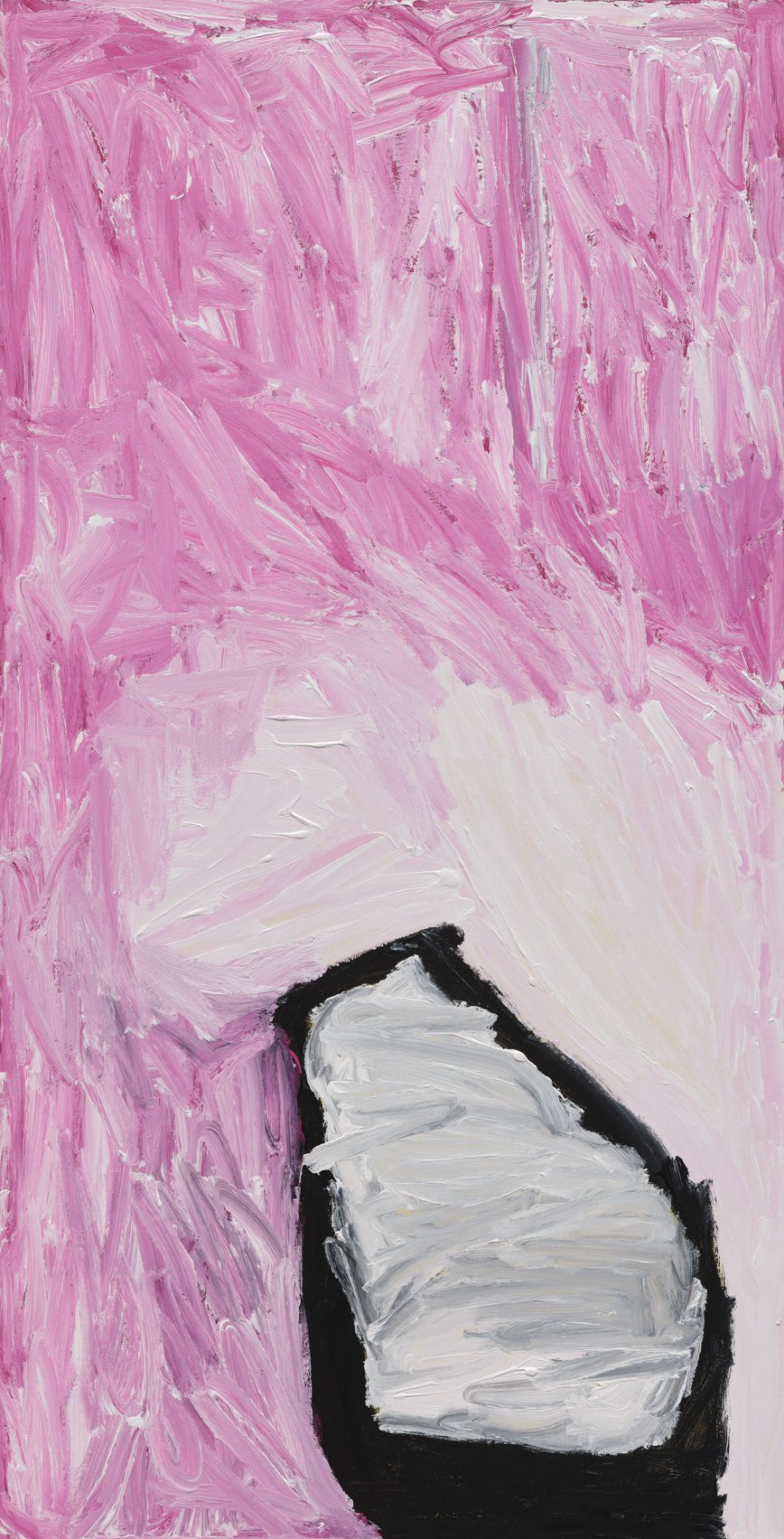Placemaking through Painting: Mirdidingkingathi Juwarnda Sally Gabori at Karma
Mirdidingkingathi Juwarnda Sally Gabori began her painting practice at 81 years old. Now, her works on linen are on view at her first New York solo exhibition at Karma, calling to a home lost to the violence of colonization and commemorated through vibrant renderings.
The composition of these works is deceptively simple, composed of large blocks of magentas, blues, reds, and yellows whose edges run together like the riverbanks that inspired the artist. A closer look at the first painting displayed next to the show’s only wall text, titled My Father’s Country, reveals a maroon underpainting that peeks through seemingly rapid strokes of white, blue, and yellow. Perhaps reminiscent of digging through the earth and finding a rich layer of soil beneath the grass, one can glimpse these secretive windows into the underpainting throughout most of Gabori’s works.
When searching for dimples of blue beneath the textured black core of My Country, the viewer gains a sense of the brushstrokes’ circular motion. A stray wood chip can be found caught in the tide of the orange above it. This sense of movement and texture is a key emotive component of Gabori’s works, and it is best appreciated in person. Traversing the gallery, one realizes that the titles of the works repeat themselves. After passing through the entryway, visitors enter a section of the gallery where four white and magenta works are displayed. Each painting in this area is titled My Country, and each reveals slivers of their blue underpainting.
One could enjoy the works for their bold color palettes and expressive brushstrokes alone, but Gabori’s compositional choices gain a layer of poeticism when understood in their placemaking context. The artist describes her works as being “about a story place way out to sea,” created to represent the painter’s birthplace of Bentinck Island, in Australia’s Gulf of Carpentaria. While her practice began by painting small-scale works, she eventually worked on 19-foot canvases, often in collaboration with family members from Bentinck Island.
The island’s Indigenous population, including Gabori and her family, were displaced to Mornington Island by Christian missionaries in the early 20th century. Kaiadilt families were broken apart as the missionaries put children through education programs, which erased their connection to their native language.
In interviews with Gabori’s family members conducted by Fondation Cartier in 2022, her granddaughter Bella Gabori recounts how Sally would sit on a cliffside and sing to her home island across the sea. In these conversations, Gabori’s family members describe the paintings not as abstractions but rather as accurate maps of Bentinck Island. Their remarks reposition our understanding of these works as aerial views of the land’s topography, recounted from Gabori’s memory. “She remembered everything, although she hadn’t been back there,” notes her son-in-law Bob Thompson.
The paintings on view at Karma are given space to breathe in the gallery’s bright and airy container, giving viewers the opportunity to follow the maps Gabori has created. One is inclined to imagine the landscape of Bentinck Island spread out before them, both on and in the empty space between canvases.
Under this lens, the misshapen concentric ovals of Rock Cod Story Place—Freshwater might show a mountain rising from the red earth in technicolor rings of blue, pink, and orange. Karma notes that the piece alludes in part to the Rock Cod, which created the island according to Kaiadilt belief.
Through these intentional contrasts of texture and color, the works command how they are meant to be seen: at first from afar, and then drawn closer and closer into a very real world torn from its keeper. Through the way these works are laid out in the gallery, this collection creates a portal through which viewers are invited to experience Gabori’s history and adoration of a homeland remembered.
Mirdidingkingathi Juwarnda Sally Gabori’s solo exhibition is on view at Karma, New York, from February 27th to April 12, 2025.




